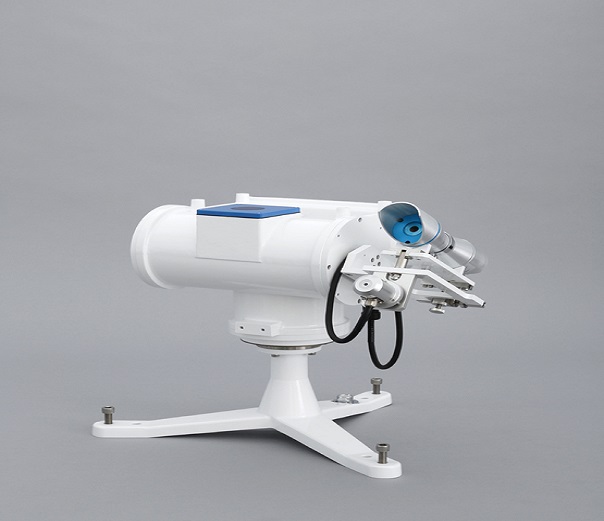MS-57 Pyrheliometer
The new MS-57 pyrheliometer was inspired by the latest development of the MS-80 pyranometer enabling a breakthrough in unprecedented low thermal offset behavior and fast thermopile response (< 0.2s / 95%). The MS-57 real time performance makes measurements more realistic.
MS-57 First Class is a direct normal incidence (DNI) solar irradiance sensor. Also known as a pyrheliometer, it is used as a reference sensor for routine operation on a Solar Tracker. The all-weather MS-57 is responsive to solar irradiance in the spectral range 200 – 4000nm and works under the most extreme conditions in a temperature range from -40°C to 80°C.
The integrated low power window heater can prevent dew deposition or frost on the outside window. The MS-57 has a robust but compact and smooth design. It forms the new generation of EKO Instruments solar radiometers that are designed for most demanding Photovoltaic and Meteorological applications at any place on earth.
Each MS-57 is calibrated outdoors and tested at EKO upon manufacture against EKO’s reference sensors, which are fully traceable to the WRR (World Radiometric Reference). The recommended period of recalibration can be extended to 5 years, which is typically 2 years for other sensor models in the market. The long-term stability of the sensor responsivity is less than 0.5% in a period of 5 years which makes it unique.
Features
- ISO 9060 First Class Pyrheliometer
- 5 years re-calibration
- Ultra fast < 0.2s response detector to detect quick radiation changes due to clouds and aerosols
- Excellent temperature stability and temperature compensation to be used in a wide temperature range
- ISO17025 / 9059 Outdoors calibration
- Efficient window heater to prevent dew and frost (0.5W)
*To avoid measurement errors use a measuring device with a minimum input impedance more than 30MΩ.
ASK A QUICK QUESTION



